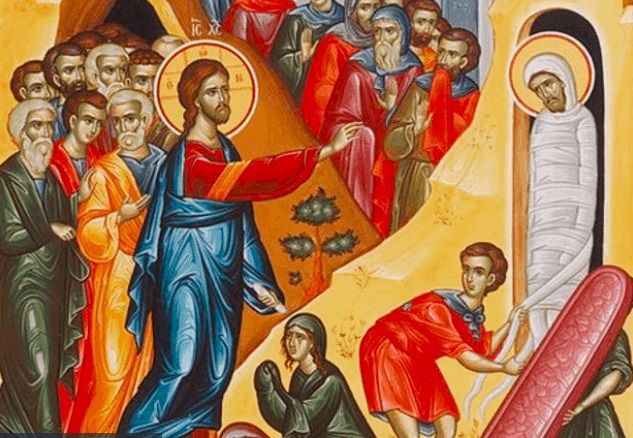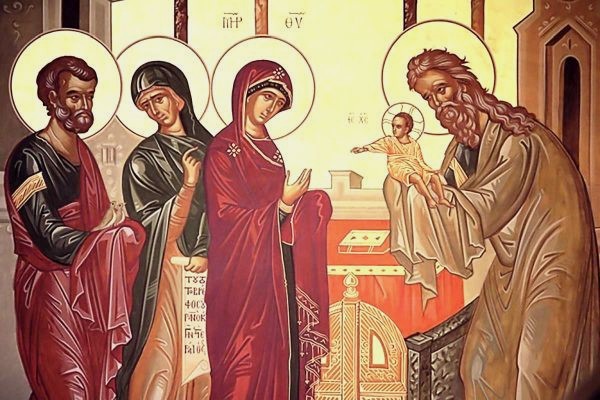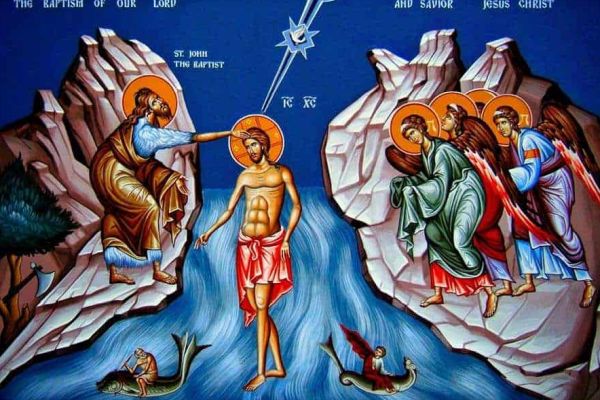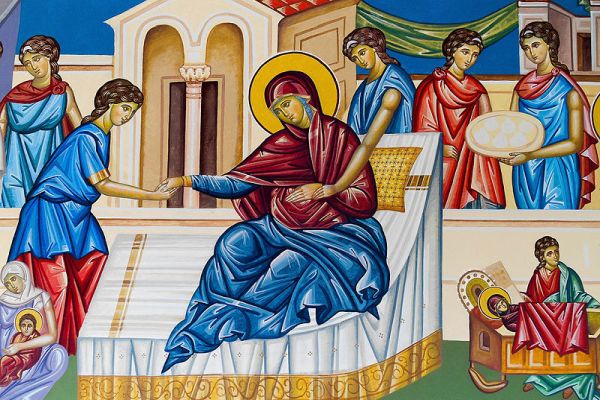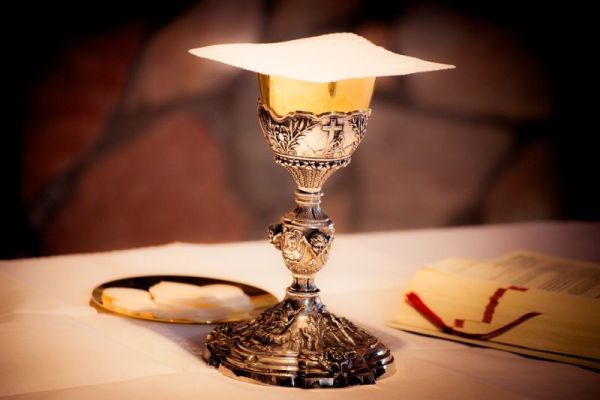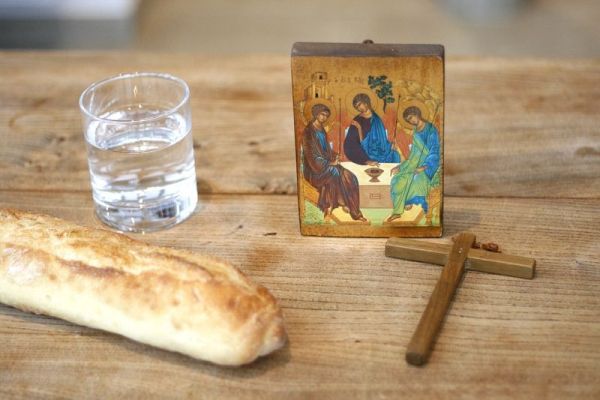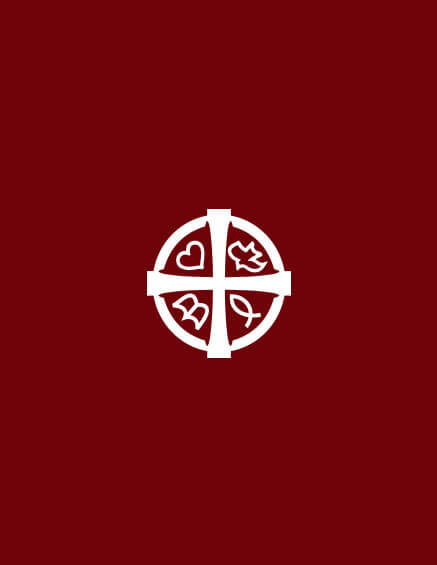The Great and Holy Week
The last week of the season of the Great Lent is known as the Holy Week or Passion Week. It is the most significant and sacred of all times in the liturgical calendar of the Church because these are the days where the faithful recall the events leading up to the Lord Jesus Christ’s death and His resurrection..
In the ancient history of the Church, this week was known as the ‘Great Week’ because of the great things accomplished by God during those last days of Christ on earth. That is why every day of this week is designated as ‘great and holy’ in orthodox Christianity – Holy Monday, Holy Tuesday and so on… until Holy Friday and Holy Saturday.
Lazarus Saturday
Though the Holy week begins with Palm Sunday, the Saturday that precedes it – called Lazarus Saturday – is also important and connected to the Holy Week. As we can gather from its name, this day commemorates the resurrection of Lazarus from the dead1. Though this is the third recorded time that our Lord raised someone from the dead, it is the most powerful example and the last one that took place before His death and resurrection.
It is significant that the Church chose to celebrate the resurrection of Lazarus just before Holy week begins. In addition to confirming the truth of general resurrection, we see that in the last hours of Lent, we are led into rejoicing at the resurrection of Lazarus (and more jubilee through Palm Sunday). This event reminds us of the forthcoming victory of Christ over Hades and death, showing us that their eventual defeat has begun as Christ begins plundering souls from them. It is because of its resemblance to the events of Holy Saturday that in the early church Lazarus Saturday was called the “Announcement of Pascha”.
Palm Sunday
The Holy week actually begins with Palm Sunday or Hosanna (Ooshaana in Syriac) Sunday, which commemorates Jesus’ humble entry (on a donkey) into Jerusalem to observe the Passover. During that Triumphant Entry which was prophesied by the Prophet Zechariah (Zech 9:9), He was greeted by crowds of people who spread their cloaks and laid palm leaves in his path, proclaiming him the Son of David (Matthew 21:5) and the promised Messiah. In many Christian churches today, the faithful celebrate this with a procession holding palm leaves, to show that we are not just onlookers in the crowd, but called to follow Christ in His suffering, death, resurrection and glory. In some of the orthodox churches, they even have a cross made out of palm leaves which is then elevated in the four cardinal directions to symbolize the victory of the cross of Christ throughout the world.
Holy Thursday
Holy Thursday (also known as Maundy2 Thursday) commemorates the Mystical Supper, the last Passover3 meal which our Lord Jesus Christ celebrated with His 12 disciples. We remember this day because it was at this Mystical Supper that our Lord instituted the Eucharist or the Holy Communion in remembrance of Him, His body broken and His blood shed for the remission of sins, as a sign of the New Covenant made with the Church. During the meal, Jesus predicted the events that would immediately follow, including his betrayal by Judas, the denial of Peter, and His death and resurrection.
The main way Holy Thursday is celebrated liturgically is through the ceremony of feet-washing which remembers the example of humility and service set by Christ who washed his disciples’ feet. That is why in any orthodox cathedrals, it is customary for the bishop to wash the feet of his parishioners in a special ceremony following the Divine Liturgy to call us to remember and follow the Son of Man who came, not to be served, but to serve.
Holy Friday
Holy Friday (Good Friday) is the most solemn day of the Holy Week. It is when we commemorate our Lord Jesus’ suffering and death on the cross; it is traditionally a day of sorrow, penance, and fasting. On this day the Church does not celebrate the Holy Communion because obviously it is the day on which we remember our Lord’s death. During the services, we usually meditate on the 12 readings from the Gospel that tell about the passion of Christ as well on His Seven Last Sayings from the Cross.
In some of the orthodox churches, the day is celebrated with a procession of the Cross inside the Church, and then the cross is covered in a white cloth, kept on the floor and venerated. This act commemorates the removal of our Lord’s body from the cross by Joseph of Arimathea (John 19:38-42). At the end of the service, the Cross will be kept behind the altar to signify the physical burial of our Lord.
Holy Saturday
Holy Saturday, also called Easter Vigil, is the traditional end of Great Lent. This is the day when we remember that the body of our Lord was buried and awaiting His resurrection. Great Saturday is the day of the pre-eminent rest when Christ observes a Sabbath rest in the tomb. His rest, however, is not inactivity but the fulfillment of the divine will and plan for the salvation of humankind and the cosmos. Through His incarnation, life and death Christ has opened a path for all flesh to the resurrection from the dead.
Though the Gospels don’t tell us about anything else happening on this day, the Church teaches us that something great and marvelous was indeed happening below the surface. In what is referred to as ‘The Harrowing of Hades’, after His death Christ descended into Hades, the place of the dead and proclaimed the Good News to all its inmates4, thus bringing salvation to all of the righteous who had died since the beginning of the world. After this was done, He ascended, liberating the righteous souls from the grip of death and Hades. This is what is referred to in the Liturgy of St. Basil – “Descending into Hades through the Cross … He loosened the bonds of death”.
So on the Great and Holy Saturday the Church contemplates this mystery of the Lord’s descent into Hades, and celebrates the defeat of Death, our ultimate enemy which was accomplished by the death of Christ. This is why the Church proclaims that Christ has “trampled death by death”. This is a day when our sorrow is transformed into joy, the day when before the Resurrection, we are given to contemplate the death of death itself!
Easter
Also known as Pascha (Passover) or Kymtha (Syriac), this day that marks the beginning of the season of Resurrection. This is greatest of all the 12 orthodox feasts and so is fittingly called the Feast of Feasts. It is the celebration of our Lord Jesus’ resurrection on the third day after His crucifixion, signifying the defeat of death and Hades. This is the reason why Easter is referred to as Pascha – because it is the new Passover from death to life and from earth to heaven.
It is usually celebrated at midnight or early in the morning before light. The liturgies usually begin with the celebrating priest saying “Christ is risen!” and the congregation responding joyfully “He is risen indeed!” The hymns and the Scripture readings deal with the resurrection of Christ from the Gospels and His victory over death. In the Indian orthodox Churches, the Cross that was hidden on Good Friday is brought out and decorated and paraded with joy in a procession after which it is lifted by the celebrating bishop or priest in the four cardinal directions, signifying the universal victory of the Cross of Christ.
Significance of the Holy Week
The Great and Holy Week is the most important of all times in the Liturgical calendar of the Church, and it has been so from the 4th century. The more we observe this annual commemoration of Christ’s suffering, death and Resurrection, the more we are able to understand the reality and historicity of our faith, and attest that Christ is truly the Way, the Truth and the Life. And the more we immerse ourselves in these, the more we are able to witness to the world about uniqueness and veracity of our faith.
But the only way to partake in the events of the Holy Week is through the exercises of Lent – prayer, fasting and almsgiving – which help us to be spiritually strong in our inner man. These means are practical indicators of our vivid faith in God. With this preparation, we are invited to enter the sanctuary of Holy Week, not as spectators, but as participants in the commemoration and enactment of the divine Acts that changed the world.
The entire Christian confession is contained in the words “Christ is Risen.” St. Paul, referring to this fact, clearly and emphatically says: “If Christ has not been raised, then our preaching is in vain and your faith is in vain.” (I Corinthians 15:14) This is the reason why, from the beginning, the Church of Christ set forth as the center of its worship and faith the Resurrection of its Lord. And that is why the Holy Week is not for us just an annual Celebration. We celebrate this every time in the Divine Liturgy – for it contains all the elements of Holy Thursday, Holy Friday and Easter. We do it regularly in remembrance of our Lord because He is the core of our faith and being. We are called to become like Him in His life, death and Resurrection. This is the goal of every true Christian. And the world will identify Christians when they recognize that they are the friends and disciples of Jesus Christ, their Lord who is alive and who dwells in their midst by the power of the Holy Spirit.
1In actuality, it is not clear how many days before the Triumphal Entry the raising of Lazarus actually took place: the Gospel of John records that Jesus withdrew from the public eye to a village called Ephraim for some time before Passover (John 11:54), after which occurred the dinner at which Mary anointed Jesus’ feet in John 12:1.
2The word “Maundy” is derived from the Latin word for “command.” The command Jesus gave to His disciples is that they should love and serve one another in humility.
3The Jewish Passover commemorates the freeing of the Hebrew people, under the leadership of Moses, from the slavery of the Egyptians by the miraculous act of God. It is no accident that God chose redemption to the events of this week.
4It is this event that St. Peter alludes to in 1 Peter 4:6 – “For this reason the gospel was preached also to those who are dead, that they might be judged according to men in the flesh, but live according to God in the spirit.” St. Paul also does the same in Ephesians 4:9 – “When it says, “He ascended,” what does it mean but that he had also descended into the lower parts of the earth?” This is also referred to in the Apostles’ Creed and the Athanasian Creed, which state that Christ “descended into the underworld”.
